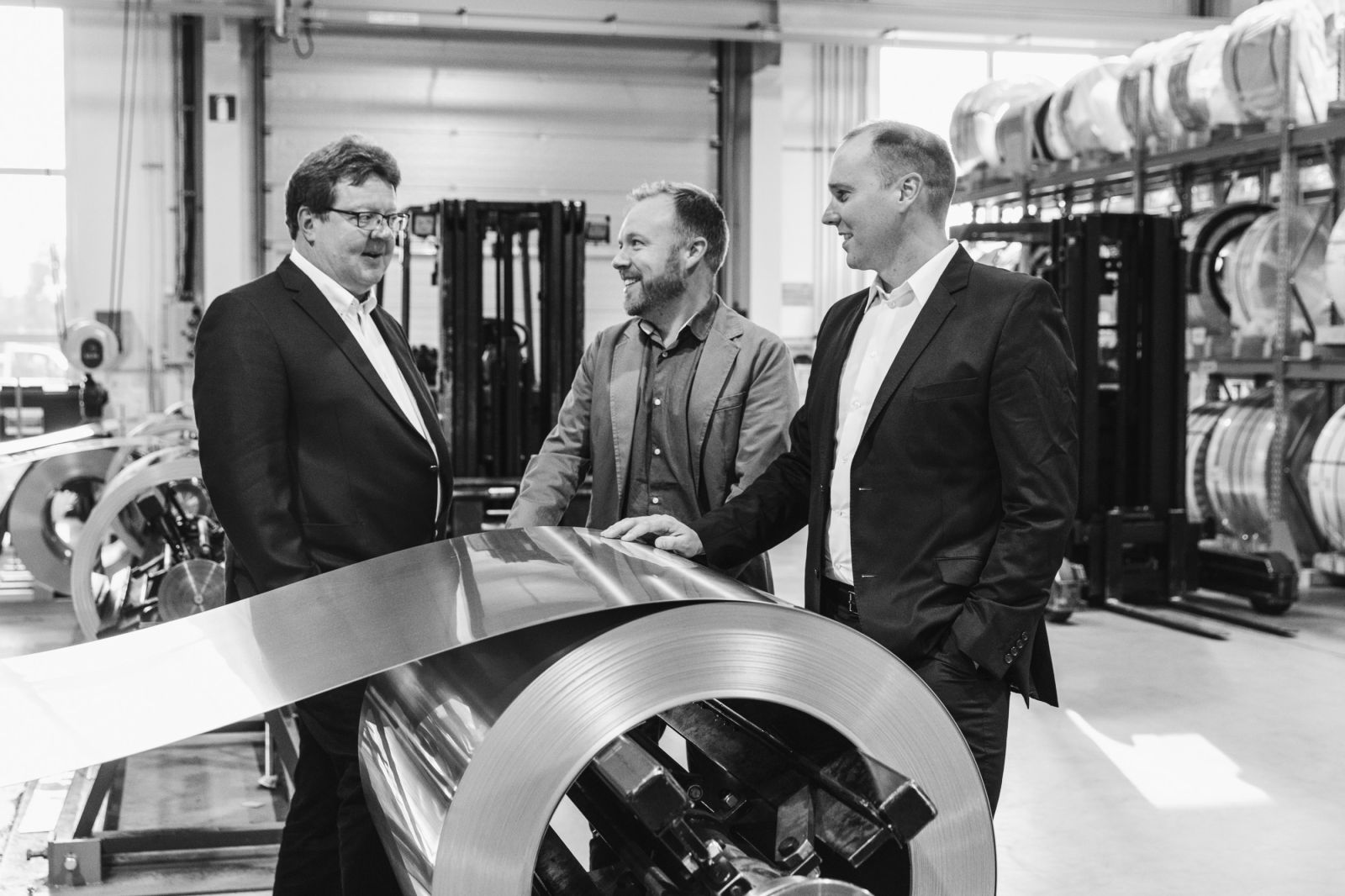Sustainability Leads Changes in the Market
As sustainability leads changes in the market, our Refrigeration Business Director Heikki Oksanen, Energy Business Director Tobias Häggblom and Chemical and Process Business Director Marko Rantala share their industry insights and discuss future outlook.

Chemical and Process
Marko Rantala, Chemical and Process Business Director
Vahterus Plate & Shell heat exchangers serve a wide range of applications in the chemical and process industries, and Vahterus has been following trends in these fields with new applications and processes. The case stories presented in this magazine give an overview of what has recently been implemented.
The case study by INERATEC, for example, illustrates the application of the smallest heat exchangers in the Vahterus range: a unit operating in the process of converting biogas to liquids. The Colonial Pipeline gasoline coolers, on the other hand, are a great example of larger Plate & Shell exchangers – certainly in terms of equipment weight. Bio-based feedstock is being utilised more often as the raw material for chemical processing. Also recycled feedstock, like plastic bottles, can be turned into diesel or non-recyclable garbage into cellulosic ethanol, bio-methanol and renewable chemicals. These processes produce relatively small quantities compared to traditional oil-based processing, but more and more of these projects are coming on line as the industry changes, and the Vahterus Plate & Shell offers a great solution.
In addition to being able to make use of waste heat from chemical processes through heat recovery, we have recently seen installations involving cold energy recovery. When re-gasifying liquefied gases, such as ethane or LNG, cold energy can be recovered for cooling purposes outside the chemical complex or the LNG terminal.
Vahterus solutions with intermediate refrigerant circuits have been installed for many years in gas carriers, but now we also have installations at onshore installations in an LNG terminal in Spain and an EO plant in China.
One of the biggest events this year is the leading process industry exhibition Achema 2018, where we showcase our latest innovations, including the first prototype of our mobile application, as a part of Vahterus’s solutions for industry 4.0.
Energy
Tobias Häggblom, Energy Business Director
The outlook for the energy industry appears brighter now than it has looked for a long time. Although investment levels are somewhat lower than when oil prices were around $100 per barrel, many projects are becoming viable with prices climbing to over $60 per barrel.
According to recent figures by Global Data, almost $800bn will be spent on over 600 upcoming oil and gas fields globally between 2018 and 2025. Brazil, Russia and the United States will each account for around 10% of the total capex spend. Brazil will have the biggest share, followed by Russia and the United States. In both Brazil and the Unites States, the largest part of the investment will be in Ultra-Deepwater projects, whilst in Russia the investments will be primarily onshore.
The following three countries, in terms of investment expenditure, are Nigeria, Australia and Mozambique. In all these countries – except Russia, where the main investments will be in either Deepwater or Ultra-Deepwater projects – this involves floating production platforms, where compact heat exchanger technologies are a great advantage. This marks a signicant opportunity for us at Vahterus.
The Floating Liquefied Natural Gas (FLNG) market is expected to grow around 25% yearly, and reach $90bn by 2024, according to Energias. The fastest growing area is for the small and mid-size FLNGs. Again, compact design features are at a premium here. In addition, the FSRU (Floating Storage Re-gasification Unit) market is expected to grow 20% yearly up to 2024.
Heat and power investments in Europe continue to suffer from low power prices. However, considerable environmental drivers such as the shut-down of nuclear power plants in Germany and Japan will increase the investment rate. The global power production by biomass is currently below 500 TWh, but is expected to reach over 900 TWh by 2022. This is a great opportunity for Vahterus, with the first Plate & Shell deliveries to this industry dating back to the early 1990s.
From Vahterus’s point of view, 2018 has started well in the energy sector, where we are experiencing significant growth compared to last year. With the correct focus and a little help from the global trends outlined here, we are likely to have a successful year.
Refrigeration
Heikki Oksanen, Refrigeration Business Director
In 2017 Finnish president Sauli Niinistö met within a short space of time the heads of state of Russia, China and the USA. Climate change and its consequences were a topic of conversation at all of these meetings; no one knows in any detail what the future holds.
When a hole in the ozone layer was discovered, a hunt for the reasons behind it immediately began, and it was revealed that refrigerants with high ODPs were one of the causes. Following the 1987 Montreal Protocol, their usage and availability has been restricted, and now in most countries they have been replaced by more environmentally friendly substances. There are now reports that the hole in the ozone layer above the North Pole is shrinking. In the refrigeration industry, we have seen success in the development of new solutions.
When making decisions about new refrigerants, there are a number of factors to consider in addition to how environmentally friendly they are, including long-term usage experiences and efficiency. It is important to ensure availability over a long period of time, as well as in different parts of the world, while the solutions must also be politically viable.
Natural refrigerants are the clear choice, with over 100 years of usage behind them. However, new solutions are also needed, such as ways to run plants on small amounts of refrigerants. This will certainly be a key focus area at the Chillventa 2018 international exhibition. The efficiency of plants in all usage conditions is an area that undoubtedly requires more attention. Energy recovery must be increased and new ideas and technologies are needed.
